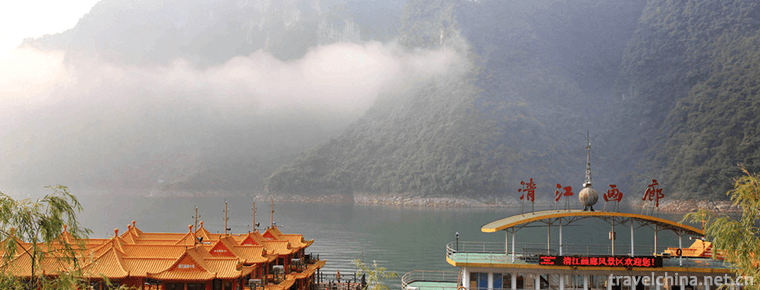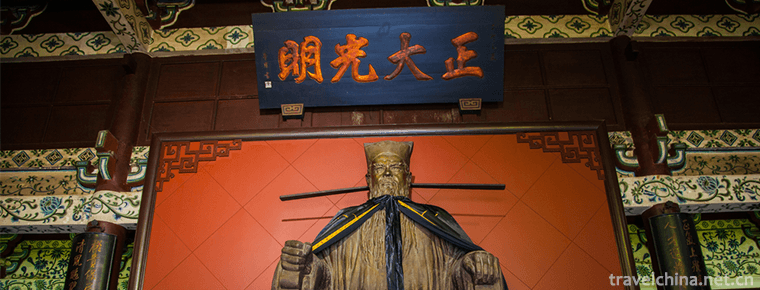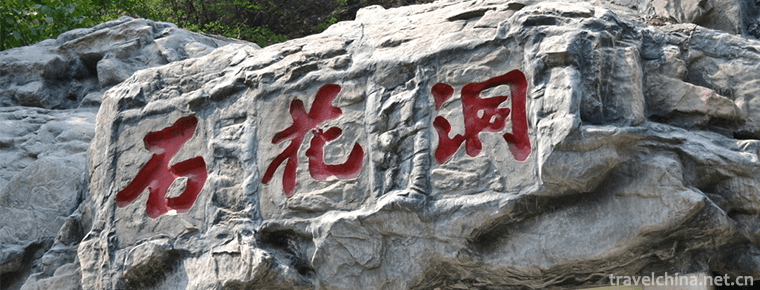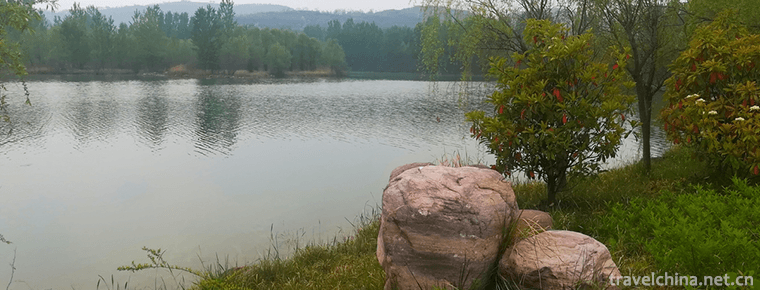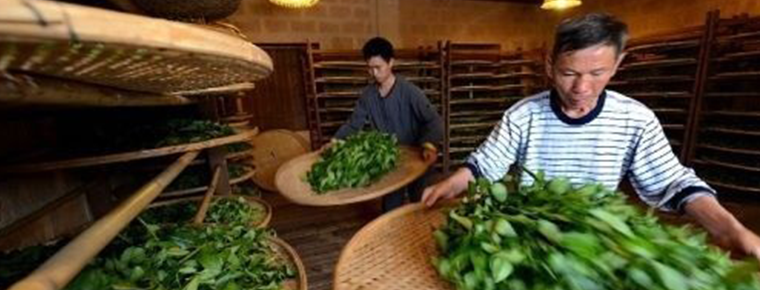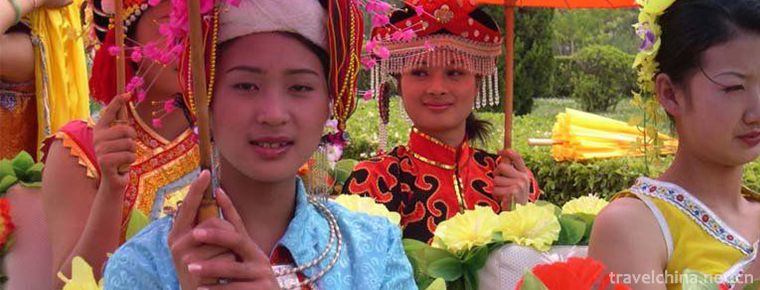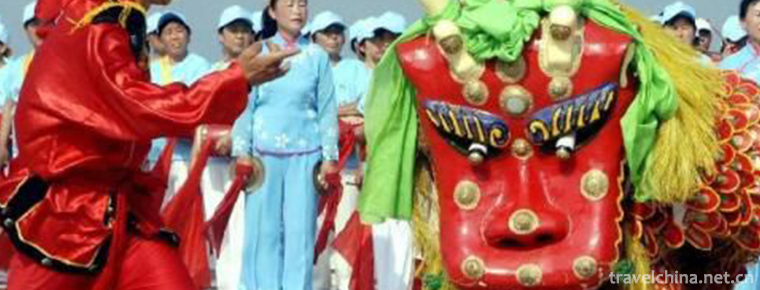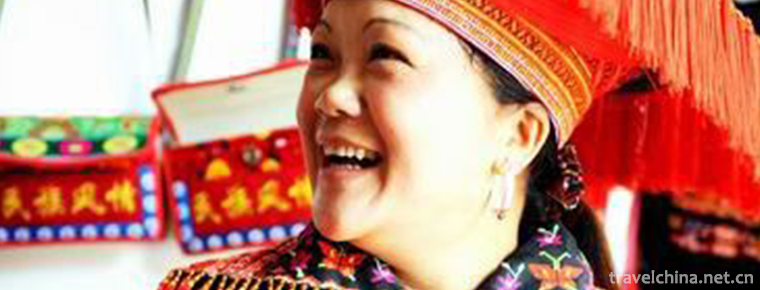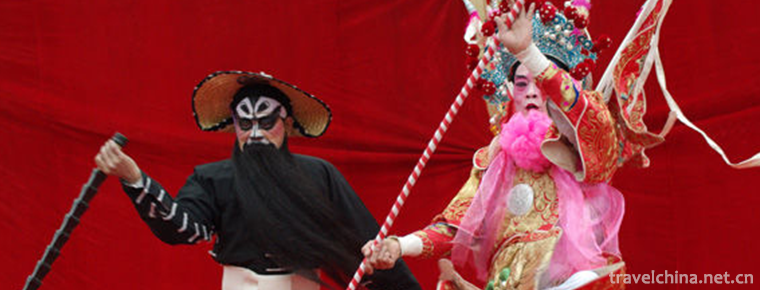Eastern Royal Tombs of the Qing Dynasty
Eastern Royal Tombs of the Qing Dynasty is located 30 kilometers northwest of Zunhua City, Tangshan City, Hebei Province. It is 125 kilometers west of Beijing City and covers an area of 80 square kilometers. It is the largest existing imperial mausoleum complex in China, with the most complete system and the most appropriate layout.
The Eastern Mausoleum of the Qing Dynasty began to be built in 1661 (Shunzhi 18) and lasted 247 years. 217 palaces and archways were successively built, forming 15 cemeteries of different sizes. The mausoleum area is 12.5 kilometers long and 20 kilometers wide. Five emperors, 15 queens, 136 concubines, 3 elder brothers and 2 princesses are buried.
Dongling Tomb of Qing Dynasty was listed in the first batch of national key cultural relics protection units in 1961, It was listed in the World Heritage List in November 2000, and in January 2001 it was appraised as the first AAAA-level tourist attractions by the National Tourism Administration. In October 2015, it was awarded National 5A Tourist Scenic Spot by the National Tourism Administration.
Located in Zunhua City, Tangshan City, Hebei Province, Qingdongling covers an area of 80 square kilometers with a latitude of 40 08 ~40 11', a longitude of 117 37 ~117 42'. It is 125 kilometers away from Beijing. The mausoleum area is 12.5 kilometers long and 20 kilometers wide. It is surrounded by mountains on all sides. There are two rivalries in the south of the mausoleum, namely, Yanxiu Mountain and Tiantai Mountain. It forms a valley mouth only 50 meters wide, commonly known as Longmen Gate.
The 15 mausoleums of the Eastern Tomb of the Qing Dynasty began in 1661 (eighteen years of Shunzhi) when Emperor Xiaoling of Shunzhi was first built, and lasted 247 years until Empress Dowager Cixi's Botuoyu Dingdong Tomb was finally built in 1908 (thirty-four years of Guangxu).
In 1661 (eighteen years of Shunzhi), the Xiaoling Tomb of Shunzhi, the first emperor in Guan Dynasty, was built, and the main project was completed in 1664 (November, the third year of Kangxi). In 1668 (Kangxi 7 years), the Shengde Gong Stele Pavilion was built.
In 1674 (the thirteenth year of Kangxi Emperor), Empress Xiao Chengren, the immediate queen of Kangxi Emperor, died and began to build Jingling. In 1676 (the fifteenth year of Kangxi) ground was broken and construction started. In 1681 (the 20th year of Kangxi) when two empresses, Xiaocheng and Xiaozhao, were buried, the Longan Hall in Jingling was still under construction. At the same time, Jingling imperial concubine's bed, which was buried by Emperor Kangxi's concubine, was also completed and became the first imperial concubine's bed built by the Qing Dynasty in Guannei.
In 1688 (Kangxi 27), Emperor Kangxi built a temporary Fengdian on the east side of Dahongmen, outside the Fengshui Wall, in accordance with his grandmother's decree. Thirty-seven years later, in 1725 (three years of Yongzheng), Emperor Yongzheng decided to rebuild the temporary Fengdian Palace into the Zhaoxi Tomb, which started construction on the third day of February of the lunar calendar and was completed by the end of the year. After the completion of Empress Xiaozhuang Wen's Temporary Anfengdian, Emperor Kangxi built a mausoleum for Empress Xiaohuizhang on the east side of Xiaoling Mausoleum, which was completed in 1693 (thirty-two years of Kangxi). This is the first empress mausoleum built by the Qing Dynasty, which set a precedent for the empress to build mausoleum alone in the Qing Dynasty. Because it is located in the east of Xiaoling Tomb and is the same system as Xiaoling Tomb, it is called Xiaodong Tomb.
In the early years of Yongzheng, Emperor Yongzheng determined his ten thousand years as Chaoyang Mountain in Jiufeng, Zunhua, and transported a large number of building materials. In 1729 (the seventh year of Yongzheng), Emperor Yongzheng abandoned it under the pretext of "large scale and incomplete shape, and the soil in the cave is Sandy and stone". He restored it to Taining Mountain, Yixian County, Hebei Province, and established another auspicious territory to build the Tailing Tomb. Since then, there has been a distinction between "Dongling" and "Xiling".
Shortly after Emperor Qianlong took office, two royal concubines, Yihui and Yiyi, who were grandmothers of Emperor Kangxi, built their own garden beds on the east side of Jingling Tomb. They are called the Royal concubines'garden beds of Jingling Tomb, commonly known as Shuangfei Tomb.
In 1742 (the seventh year of Qianlong reign), Emperor Qianlong identified Shengshui Valley in Dongling as his auspicious land for ten thousand years. The next year, in February, the land was broken and constructed, and it was completed in 1752 (the seventeenth year of Qianlong reign). In 1799 (Four Years of Jiaqing), it was named Yuling.
1747 (Twelve Years of Qianlong) Yuling imperial concubine's dormitory broke ground and was completed in 1752 (Seventeen Years of Qianlong). From 1755 to 1762 (the twentieth to twenty-seventh year of Qianlong Emperor) expansion was carried out, with the addition of Fangcheng, Ming Lou, Baocheng and Dongxi Palace.
In order to balance the relationship between the Eastern and Western Mausoleums, Emperor Hong Li of the Tai Emperor in 1796 ordered that the mausoleums of the later emperors be divided into the Eastern and Western Mausoleums in Zhaomu order.
Emperor Daoguang built his mausoleum at Baohuayu Camp in Dongling in 1821 (the first year of Daoguang), and in 1827 (the seventh year of Daoguang). Its imperial concubine and Princess Park beds were also completed. The second year after the completion of Baohuayu Mausoleum, due to the discovery of water seepage in the underground palace, Emperor Daoguang took another place in the territory of Xiling Mausoleum. The built Dongling Mausoleum and the imperial concubine's garden were dismantled and transported to the Xiling Mausoleum for reconstruction, leaving a piece of ruins in the boundary of Dongling Mausoleum.
After Emperor Xianfeng took office, the site of the mausoleum was chosen as Pingyu within the boundary of the Dongling Mausoleum. In 1859 (the Ninth Year of Xianfeng) ground was broken and construction started. Mausoleum workers were hindered by the outbreak of the Second Opium War. In 1861 (the eleventh year of Xianfeng), after the collapse of the summer resort in Chengde, Emperor Xianfeng was forced to speed up the work of the mausoleum, which was completed in 1866 (five years of Tongzhi) and named "Dingling". Subsequently, the imperial concubines'garden beds were completed one after another. In the construction of Dingling Mausoleum, due to the war losses and the emptiness of the national treasury, a large number of old materials from the abandoned Mausoleum of Emperor Guangdi of Baohuayu Daoguang had to be selected, and the construction quality was much worse than before.
In 1873, Empress Dowager Ci'an and Empress Dowager Cixi's Dingdong Mausoleum were built at the same time in Puxiangyu and Botuoyu valleys, two miles east of Dingling Mausoleum. In 1879, they were completed at the same time. Sixteen years later, Cixi ordered that her mausoleum be rebuilt. Construction began in 1895 (Guangxu 21) and completed in 1908 (Guangxu 34), which lasted 13 years. Because these two mausoleums are located on the east side of Dingling and are subordinate to Dingling, they are collectively called Dingdong Mausoleum. Empress Dowager Ci'an's mausoleum is called Puxiangyu Dingdong Mausoleum, Empress Dowager Cixi's mausoleum is called Botuoyu Dingdong Mausoleum.
Tongzhi Emperor did not choose the mausoleum site before his death, but he hurried to visit it after his collapse. The mausoleum site was located in Shuangshan Valley within the boundary of the Dongling Mausoleum, which was named Huiling. Construction began in 1875 (the first year of Guangxu) and was completed in 1878 (the fourth year of Guangxu). The imperial concubine dormitory on the west side of Huiling was also built between 1876 and 1878 (two to four years of Guangxu). Due to the difficult national strength, only 21 years later, in 1899 (Guangxu 25 years), it was discovered that most of the wooden components of Longan Hall were damaged and rotten, and had to be demolished and rebuilt. Reconstruction began in 1899. The project was suspended after the invasion of Beijing by the Eight-Power Coalition Army, which lasted eight years until 1906 (Guangxu 32).
In July 1928, Sun Dianying, the commander of the 12th Army of the Kuomintang, plotted a robbery case in the name of "suppressing bandits", and excavated the Yuling Tomb of Emperor Qianlong and the Dingdong Tomb of Empress Dowager Cixi.
In September 1945, Zhang Zhengzhong, captain of the intelligence team of the 15th Military Area of the Eastern Hebei Military Region under the jurisdiction of the Puppet East Hebei Defense Communist Autonomous Government, and Wang Shaoyi, Mu Shuxuan, Jia Zhengguo, Zhao Guozheng, Li Shuqing, Liu En and Liu Jixin openly began to steal the mausoleum. Of the 14 tombs in the whole Eastern Mausoleum of the Qing Dynasty, almost none of the 157 tombs survived.
In 1952, the Cultural Relics Preservation Institute of the Eastern Mausoleum of the Qing Dynasty was established to manage the mausoleum.
In 1961, Dongling Tomb of Qing Dynasty was listed as the first batch of key cultural relics protection units by the State Council.
In 1978, it was officially opened for Chinese and foreign tourists to visit.
On November 30, 2000, at the 24th World Heritage Committee meeting held in Cairns, Australia, the Qing Dongling Tomb was adopted by a full vote and included in the World Heritage List.


















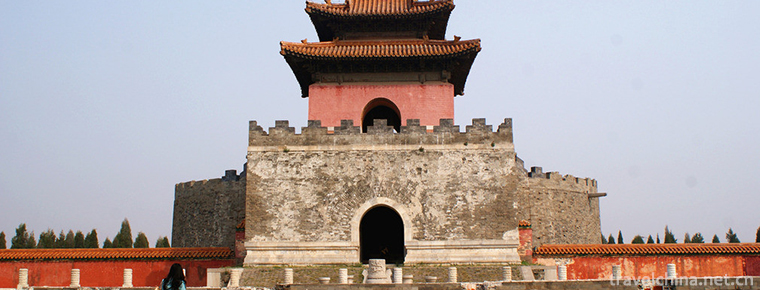
-
Qingjiang Gallery Scenic Area
Qingjiang Gallery Scenic Area, National AAAAA Class Tourist Area, National Geopark, National Forest Park, Ten New Brands of National Cultural Tourism, Ten Best Scenic Areas in Hubei Province, and Hube.
Views: 138 Time 2018-12-12 -
Wanpingkou Scenic Area
Wanpingkou scenic spot is located in Rizhao, a beautiful coastal city in Shandong Province. "Tourist sunshine is bound to Wanpingkou" has become the consensus of tourists around the world.
Views: 88 Time 2018-12-17 -
Bao Xiaosu Temple
Baoxiao Sugong Temple, abbreviated as "Baogong Temple", is located on a mound in the east section of Huancheng South Road, Hefei City, Anhui Province. It is the main ancient building complex.
Views: 116 Time 2018-12-26 -
Shihuadong National Geological Park
Beijing Shihuadong National Geopark is located in Cheying Village, Nancheng Town, Hebei Province, Fangshan District, Beijing. It is a seven-storey karst cave 55 kilometers away from Beijing.
Views: 131 Time 2019-02-08 -
Xiaolangdi Dam
Xiaolangdi, the Yellow River Xiaolangdi, is located in the Yellow River Xiaolangdi Scenic Area at the junction of Luoyang City and Jiyuan City, Henan Province..
Views: 315 Time 2019-02-25 -
Production Techniques of Flower Tea
Jasmine tea, also known as jasmine fragrance, is the tea and jasmine flowers to blend, bass, so that tea leaves absorb flower fragrance into tea, tea fragrance and jasmine fragrance interactively inte.
Views: 172 Time 2019-05-04 -
Nu Fairy Festival
Fairy Festival is a traditional folk festival of Nu people in Gongshan area of Yunnan Province. The local flower festival, also known as the Flower Festival, is held on March 15 of the lunar calendar .
Views: 289 Time 2019-06-08 -
kylin dance
Kirin dance, also known as "Wu" Kirin, is a court dance performance of the Ming Dynasty in China. It was spread among the people when the Nanming Dynasty perished. When dancing, .
Views: 97 Time 2019-06-10 -
Yao Costume
Yao people used to call themselves "Guoshan Yao", "Hongtou Yao", "Dabanyao", "Pingtouyao", "Blue Indigo Yao", "Shayao" and "Baitou Yao&.
Views: 294 Time 2019-07-11 -
Guangxi drama
One of the local operas of the Zhuang nationality in Guangxi. Yongju Opera belongs to the Pihuang Vocal Tune System, which originated in Hunan. It was formerly called Guangju Opera, Old Opera, Local O.
Views: 166 Time 2019-07-14 -
Neijiang geographical environment
Neijiang City is mainly hilly, surrounded by low mountains in the southeast and southwest. About 90% of the hills are between 350 and 450 meters above sea level. The geological structure is a part of the Neocathaysian subsidence zone with small fold fault scale.
Views: 98 Time 2020-12-16 -
Dazhou environmental protection
In 2019, the afforestation area of Dazhou city is 11666.60 hectares, the forest area is 735300 hectares, and the forest coverage rate is 44.34%. The air, water and soil pollution prevention and control were carried out in depth. The air compliance rate .
Views: 95 Time 2020-12-20
